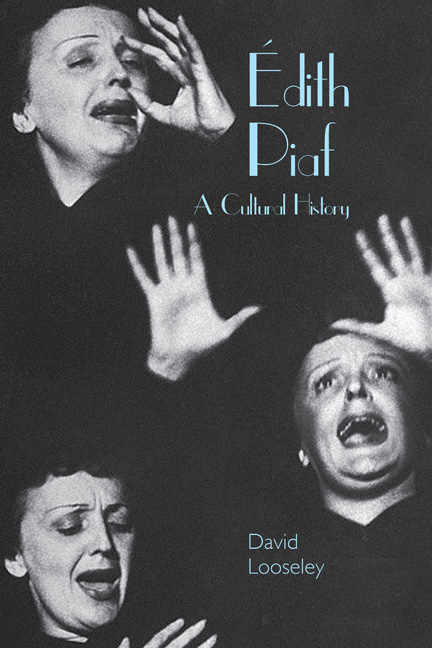4 - A new Piaf
from Part II - Piaf and Chanson
Summary
By the end of the war, as Piaf turned 30, her life was changing drastically. Her mother died in 1944 and her father a year later, severing her umbilical bond with the past. In 1946, she starred in the film Étoile sans lumière, written for her and directed by Marcel Blistène. She recorded one of her biggest hits, ‘La Vie en rose’, which she purportedly wrote. There was talk in the press of an American tour and even a Hollywood film, though the movie never materialised. That same year, she debuted at the vast Théâtre de Chaillot with a 50-piece orchestra. Her new orchestral ambitions also made her change record labels from Polydor to Columbia (Pathé Marconi), as Canetti's company was unable to accommodate them. It had become customary for presenters to introduce her on stage with the words ‘Just one name, and in that name, the whole of chanson: Édith Piaf’. But she now realised she needed no introduction. From the end of the war to the end of her life, she was simply ‘la grande dame de la chanson française’ (the grand lady of French chanson). She had also made up her mind to move away from the chansonréaliste and began assembling round her a new creative team whom she could control and who would help her refine the imagined Piaf. She had acquired a taste for coaching new talents. In 1947, she cracked America and became an international star. While there, she found the love of her life, the boxer Marcel Cerdan, and lost him again in a plane crash in October 1949.
Thanks to Asso, Bourgeat and Cocteau, she had continued reading widely during the war and her social circle had broadened. Members of the Paris literary scene had long taken an interest in the chanson réaliste, among them Cocteau, Prévert, the symbolist Léon-Paul Fargue and the surrealists Aragon and Desnos. In his 1938 article about her, Fargue had even evoked the ‘divine brushstrokes’ of Goya or Delacroix and the poetry of Mallarmé, Baudelaire and Rimbaud to describe her. Listening to her tales of soldiers and criminals, he had often heard ‘the call of a loftier, sparer poetry’, connecting her to ‘[the] most elliptical and refined poets.’ Two years later, Piaf's encounter with Cocteau had proven particularly formative.
- Type
- Chapter
- Information
- Édith PiafA Cultural History, pp. 83 - 96Publisher: Liverpool University PressPrint publication year: 2015

